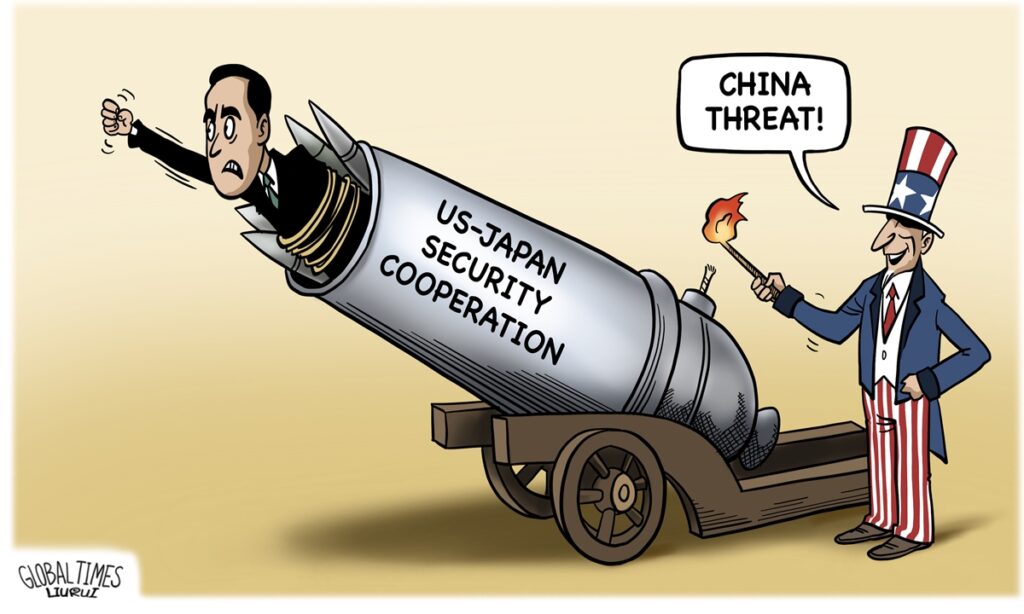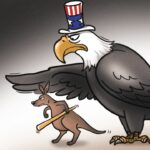The US and Japan have once again released a “sounding balloon” on the deployment of medium-range ballistic missiles (MRBMs) to US forces in Japan. Japanese media recently quoted sources saying that Washington has proposed to deploy such missiles in Japan as part of a plan to strengthen “defense against China.” The report also noted that the deployment could include long-range hypersonic weapons and Tomahawk cruise missiles. It then claimed that Tokyo is poised to start serious discussions about accepting the deployment and considering the island of Kyushu, which is near the island of Taiwan, as a possible location. Obviously, this news is not just baseless rumors, but an attempt from Washington and Tokyo to explore the way ahead for such a significant military escalation.
Just over 10 days ago, the White House vowed no plans to deploy MRBMs in Japan. This is not because the US does not want to do so, but precisely because the resistance is so great that it has to be scrupulous. In recent years, Washington has been eager to build a missile network against China along the first island chain. But Washington has been struggling to find the “dupe” willing to accept its MRBMs, because such an action is equivalent to covering oneself with detonators, becoming a “body shield” for the US military. As a result, the US continues to test the reaction of other countries by giving out relevant information. For instance, there was a piece of news before claiming that the deployment might be in Japan, South Korea, Australia, or the Philippines. However, Seoul, Canberra, and Manila have flatly rejected it, leaving no room for such a possibility. Clearly, it is not difficult to weigh the possible gains and losses.
Tokyo has not made a public statement on this matter, but its posture of utterly complying with Washington has given the US an opportunity to increase pressure on Japan. Back in 2020, some US officials called Japan one of the potential sites for the deployment of MRBMs, and Japan was the only country publicly named by the US. It is easy to see that Washington simply does not care, despite the strong opposition from the Japanese society to this news. In other words, Tokyo basically has little say in front of the powerful US. What is even more unbelievable is that many Japanese right-wing politicians have become lobbyists for Washington, persuading their own people that the deployment of the missiles is “absolutely necessary” and even said they want to “actively request the US to do so.” Such a type of self-denigration is almost unprecedented in today’s world.
If Tokyo insists on deploying the US military’s MRBMs on Japanese soil, it will undoubtedly burn its own country’s future into flames. This means that once an armed conflict occurs in relevant waters, these bases will be the first main targets. Due to Japan’s terrain and the characteristics of land-based intermediate missiles, they can be quickly located and have a high probability of being destroyed in the first round of strikes. Deploying medium-range missiles at several points cannot enhance Japan’s so-called “deterrence capability,” but will instead make it feel the intense pain of burning itself in the first place. As for the US, since it is Japan that is being beaten anyway, and the mainland of the US is hundreds of thousands of miles away, this is simply a lucrative business.
Now American and Japanese politicians are frequently talking about the Taiwan question, trying to hype up the “China threat” to trick the Japanese society into accepting this dirty political deal. But history has repeatedly proved that where the US medium-range missiles are deployed, the fuses of the detonators are placed.
During the Cold War, the US and the Soviet Union competed to intensively deploy medium-range missiles on the European continent, which aroused strong concerns and opposition from European countries. In particular, due to the short flight time of MRBMs, they are generally regarded as the trigger of a nuclear war. It was under the suffocating shadow of the nuclear war that the US and the Soviet Union finally signed the Intermediate-Range Nuclear Forces Treaty (INF Treaty). After the Trump administration announced its withdrawal from the INF Treaty in 2019, European countries reacted most strongly. It is no longer the era of bipolar hegemony, but some Japanese politicians want to repeat the same mistakes in East Asia. This is short-sighted and stupid.
In recent years, the US and Japan have released information on the deployment of medium-range missiles several times. The relevant news, true or false, has been circulating for several years. It’s hard not to be suspicious that it is the exhaustion tactics of the US and Japan in attempt to make the region gradually acquiesce to the “fact” of the deployment of MRBMs, so as to reduce the impact when they are really deployed one day.
But the attitude of countries in the region, including China, is very firm and clear, and there is no need for Washington and Tokyo to try to test it out. On this issue, no matter how many “sounding balloons” the US and Japan send out, it will not help. Japan should particularly be cautious and not tie the US military’s “detonators” to itself.
(Global Times)




